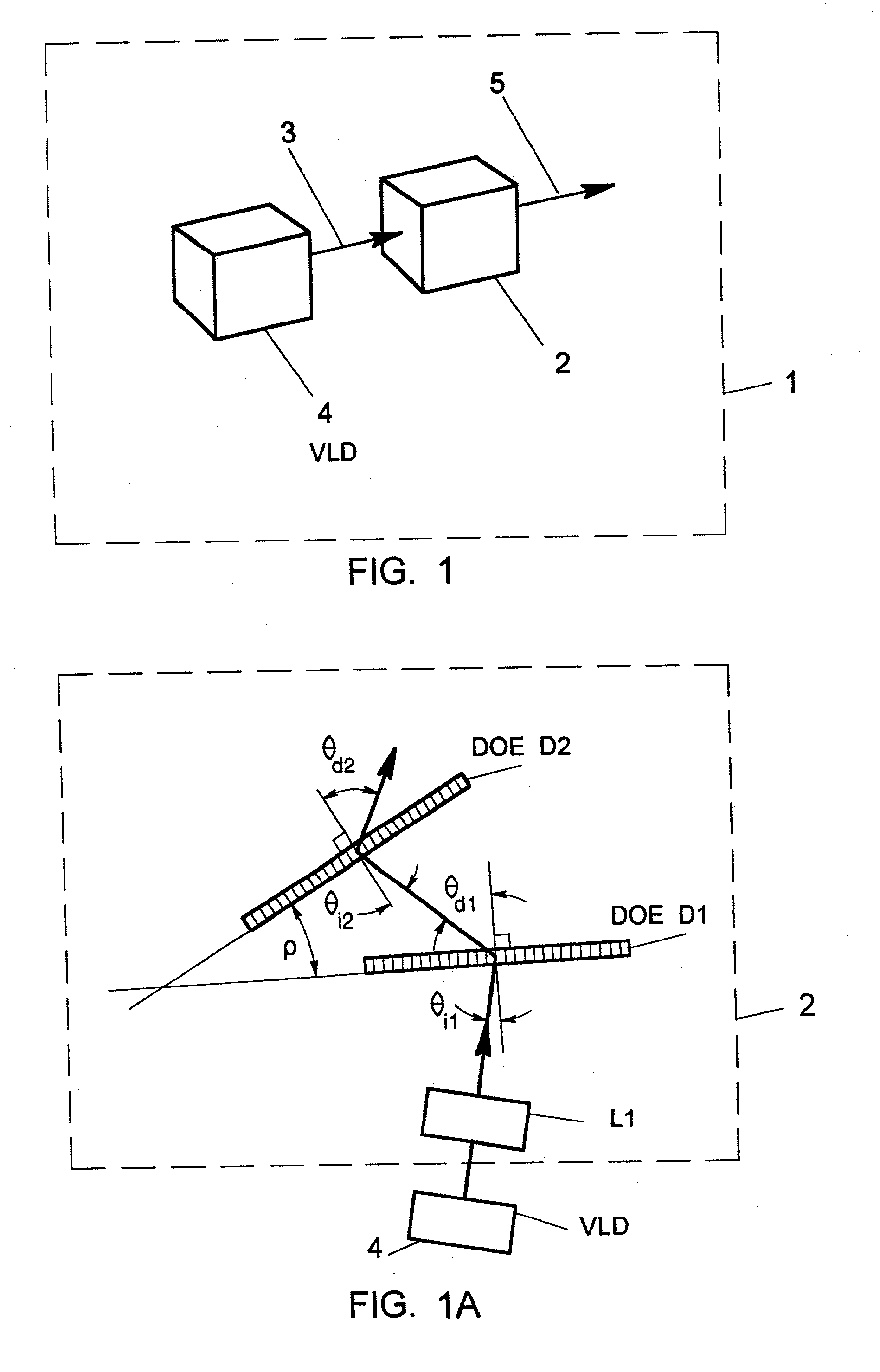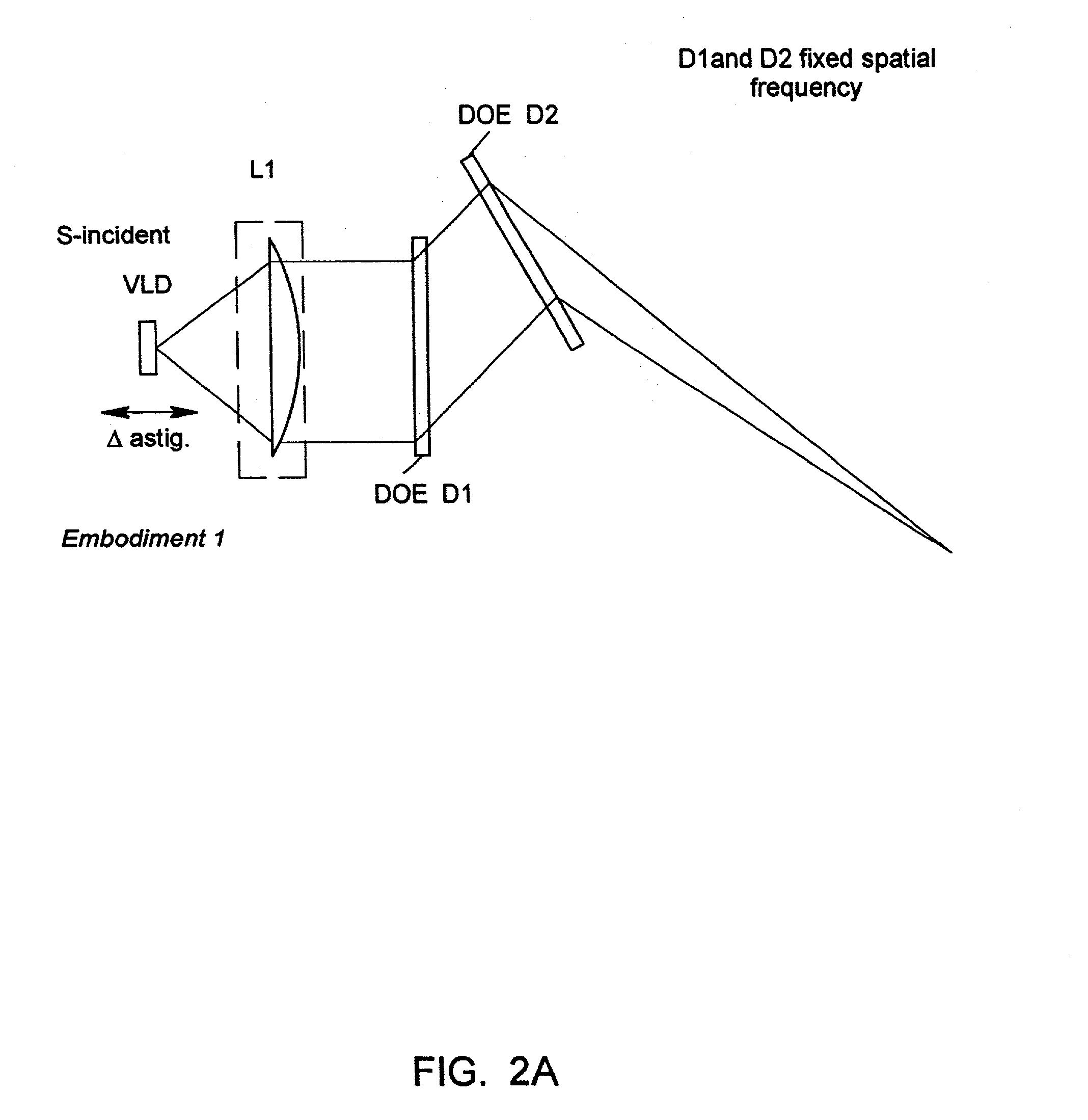DOE-based systems and devices for producing laser beams having modified beam characteristics
- Summary
- Abstract
- Description
- Claims
- Application Information
AI Technical Summary
Benefits of technology
Problems solved by technology
Method used
Image
Examples
case 1
[0304] Constructing Fixed Frequency HOEs
[0305] When constructing a fixed frequency hologram (HOE), the object and reference beams must have the same radius of curvature. In most applications, this is accomplished by collimating the two beams so that we have two wavefronts at the hologram recording medium. The angle between the two beams will determine the spatial frequency of the fixed frequency hologram. The greater the angle, the greater the spatial frequency. The actual spatial frequency of the hologram is, more precisely, a function of the angles of incidence of the two beams at the hologram recording medium and the wavelength of the two beams. The spatial frequency is established by the well known grating equation: d=wavelength / (sinO+sinR), where O is the angle of incidence of the object beam and R is the angle of incidence of the reference beam.
case ii
[0306] Constructing Variable Frequency HOEs
[0307] When constructing a variable frequency hologram (HOE), the object and reference beams must have different radii of curvature. In most applications, this is accomplished by collimating one of the beams and making the other beam a diverging beam. We will choose to call the collimated beam the reference beam. The diverging beam, which we will choose to call the object beam, is generally created by transmitting the object beam portion of the laser beam through a positive lens, such as a microscope objective. The focal point of the converging beam leaving the positive lens then becomes the center of curvature of the object beam. If this positive lens is a spherical lens, the object beam wavefront at the hologram recording medium will be spherical. If the lens is cylindrical lens, with optical power in only one dimension, the object beam wavefront at the hologram recording medium will be cylindrical. In the case of cylindrical wavefront, ...
PUM
 Login to View More
Login to View More Abstract
Description
Claims
Application Information
 Login to View More
Login to View More - R&D
- Intellectual Property
- Life Sciences
- Materials
- Tech Scout
- Unparalleled Data Quality
- Higher Quality Content
- 60% Fewer Hallucinations
Browse by: Latest US Patents, China's latest patents, Technical Efficacy Thesaurus, Application Domain, Technology Topic, Popular Technical Reports.
© 2025 PatSnap. All rights reserved.Legal|Privacy policy|Modern Slavery Act Transparency Statement|Sitemap|About US| Contact US: help@patsnap.com



